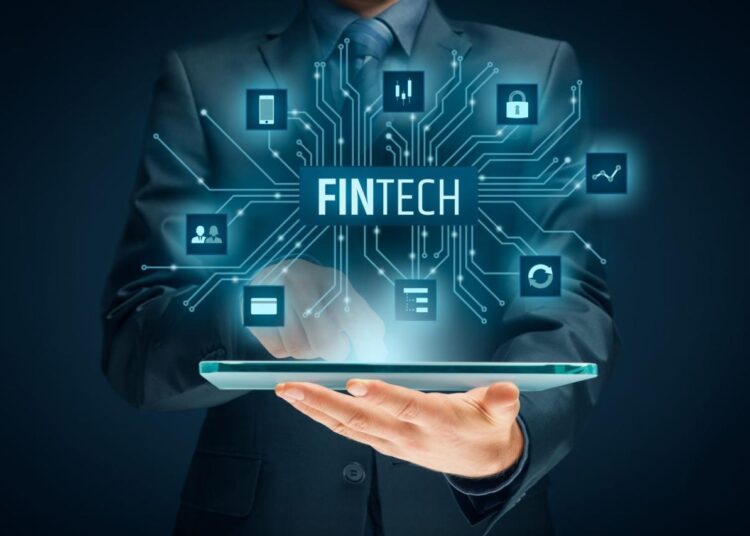The financial world is undergoing a profound transformation, driven by an unstoppable wave of Fintech innovations. No longer just a buzzword, Fintech, or financial technology, is fundamentally reshaping how we manage our money, access credit, invest, and interact with financial services. This revolution is democratizing finance, enhancing efficiency, and challenging traditional banking models. Understanding these innovations isn’t just for industry insiders; it’s crucial for consumers, businesses, and investors seeking to navigate the evolving financial landscape and capitalize on the opportunities it presents. This comprehensive guide will delve deep into the key Fintech innovations, explore their impact on modern banking, and outline the future trajectory of this dynamic sector.
Understanding the Fintech Revolution

Fintech is broadly defined as technology-driven innovation in financial services. It encompasses a vast array of advancements, from digital payments to artificial intelligence in lending, all aimed at making financial services more accessible, efficient, and user-friendly.
A. The Genesis of Fintech
The rise of Fintech isn’t a sudden phenomenon; it’s the culmination of several converging factors:
A. Technological Advancements: The widespread availability of powerful computing, ubiquitous internet access, smartphone penetration, and advancements in data analytics, AI, and blockchain have created the perfect breeding ground for innovative financial solutions.
B. Consumer Demand for Convenience: Modern consumers, accustomed to seamless digital experiences in other sectors (e.g., e-commerce, streaming), demand similar ease and speed from their financial providers. Traditional banking often fell short of these expectations.
C. Regulatory Shifts: In some regions, progressive regulatory frameworks (like Open Banking initiatives) have actively encouraged innovation and competition within the financial sector, enabling Fintechs to access data and integrate services more easily.
D. Post-2008 Financial Crisis Trust Issues: The global financial crisis eroded public trust in traditional banks, creating an opening for new, often more transparent and consumer-centric, financial service providers.
E. Cost Efficiency: Legacy banking systems are often expensive to maintain and operate. Fintechs, built on newer, leaner technologies, can offer services at a lower cost, passing savings on to consumers or achieving higher profit margins.
B. Core Principles Driving Fintech Innovations
Several guiding principles underpin the development and success of Fintech solutions:
A. Customer-Centricity: Fintechs prioritize user experience, designing intuitive apps and platforms that simplify complex financial processes and meet specific customer needs.
B. Efficiency and Automation: By automating processes, Fintechs reduce manual errors, speed up transactions, and lower operational costs, leading to faster and cheaper services.
C. Accessibility and Inclusion: Many Fintech solutions aim to serve underserved populations, including the unbanked or underbanked, small businesses, and those in remote areas, by leveraging mobile technology and alternative data.
D. Data-Driven Decision Making: Fintechs extensively use data analytics and AI to understand customer behavior, assess risk, personalize offerings, and detect fraud more effectively than traditional methods.
E. Interoperability and Open APIs: The trend towards Open Banking encourages financial institutions to share customer data (with consent) via Application Programming Interfaces (APIs), enabling seamless integration of services and fostering a more connected financial ecosystem.
Key Fintech Innovations Reshaping Banking
The impact of Fintech is visible across almost every segment of financial services. Here are some of the most transformative innovations:
A. Digital Payments and Wallets
Perhaps the most ubiquitous Fintech innovation, digital payments have revolutionized how we transact.
A. Mobile Payment Apps: Platforms like Apple Pay, Google Pay, and various regional apps allow users to make secure payments using their smartphones, often with biometric authentication. This has reduced reliance on physical cards and cash.
B. Peer-to-Peer (P2P) Payment Systems: Services like Venmo, PayPal, and Zelle enable instant money transfers between individuals, making splitting bills or sending money to friends incredibly easy.
C. Digital Wallets: These store payment information (credit/debit cards, loyalty cards) securely, facilitating quick online and in-store transactions. They often integrate budgeting and spending tracking features.
D. Contactless Payments: NFC (Near Field Communication) technology allows for quick, tap-and-go payments with cards or mobile devices, enhancing convenience and speed at the point of sale.
B. Neobanks and Challenger Banks
These are digital-first banks that operate exclusively online, without physical branches. They often provide a superior user experience and lower fees.
A. Lower Overheads, Lower Fees: Without the cost of maintaining physical branches, neobanks can offer highly competitive interest rates on savings accounts and significantly lower (or no) fees for common banking services.
B. Enhanced User Experience: Their mobile-first approach means sleek, intuitive apps with features like real-time spending notifications, budgeting tools, and easy account setup.
C. Faster Account Opening: The entire account opening process can often be completed in minutes through a smartphone app, bypassing lengthy paperwork.
D. Personalized Insights: Many neobanks use AI to provide personalized spending insights, savings recommendations, and financial planning tools.
Examples include Revolut, N26, Monzo, and Chime, which have rapidly gained millions of customers worldwide.
C. Online Lending and Peer-to-Peer (P2P) Lending
Fintech has significantly disrupted the traditional lending landscape, making credit more accessible and often faster.
A. Automated Credit Scoring: Fintech lenders leverage alternative data sources (beyond traditional credit scores) and AI algorithms to assess creditworthiness more accurately and efficiently, often approving loans in minutes.
B. Peer-to-Peer (P2P) Lending Platforms: These platforms connect individual borrowers directly with individual lenders, cutting out the traditional bank intermediary. This can lead to lower interest rates for borrowers and higher returns for lenders, though it carries default risk.
C. Crowdfunding: Beyond P2P lending, crowdfunding platforms (for equity, debt, or rewards) allow individuals and businesses to raise capital directly from a large number of small investors, bypassing traditional venture capital or bank loans.
D. Embedded Finance: This is the integration of financial services directly into non-financial platforms (e.g., a “Buy Now, Pay Later” option integrated into an e-commerce checkout page, or insurance offered directly within a car-sharing app). It makes financial services seamless and contextual.
D. Investment and Wealth Management Platforms
Fintech has democratized investing, making it accessible to a wider audience, including retail investors with smaller capital.
A. Robo-Advisors: These automated digital platforms use algorithms to manage investment portfolios based on a user’s financial goals and risk tolerance. They offer low fees, automated rebalancing, and professional diversification, making investing accessible to beginners.
B. Fractional Share Investing: Platforms allowing investors to buy fractions of expensive stocks (e.g., Amazon, Google) have lowered the barrier to entry for building diversified portfolios, making blue-chip companies accessible to smaller investors.
C. Commission-Free Trading: The advent of commission-free stock and ETF trading has significantly reduced the cost of investing, encouraging more frequent trading and broader participation.
D. Social Trading Platforms: These platforms allow users to follow and copy the trades of successful investors, fostering a community aspect to investing.
E. Cryptocurrency Exchanges and Wallets: These platforms enable users to buy, sell, and store digital assets like Bitcoin and Ethereum, opening up a new, highly volatile, yet potentially lucrative asset class.
E. Blockchain and Distributed Ledger Technology (DLT)
While still evolving, blockchain’s potential impact on banking is immense, promising greater security, transparency, and efficiency.
A. Faster and Cheaper Cross-Border Payments: Blockchain can facilitate near-instant and low-cost international remittances by eliminating intermediaries and traditional banking hours.
B. Trade Finance: DLT can streamline complex trade finance operations by providing a transparent, immutable record of transactions, reducing fraud and processing times.
C. Smart Contracts: Self-executing contracts stored on a blockchain can automate agreements (e.g., releasing funds when certain conditions are met), potentially revolutionizing insurance claims, legal agreements, and escrow services.
D. Digital Identity and KYC (Know Your Customer): Blockchain can create secure, verifiable digital identities, simplifying and speeding up KYC and AML (Anti-Money Laundering) processes for financial institutions.
Impact of Fintech Innovations on Traditional Banking

The rise of Fintech has forced traditional banks to adapt, innovate, or risk obsolescence. This has led to a dynamic interplay of competition, collaboration, and transformation.
A. Increased Competition and Pressure on Fees
Fintechs, with their leaner cost structures and agile development, have introduced fierce competition, particularly in areas like payments, personal loans, and basic banking. This pressure has forced traditional banks to:
A. Reduce Fees: Many banks have lowered or eliminated fees for services like ATM withdrawals, foreign transactions, and monthly maintenance to compete with neobanks.
B. Improve Interest Rates: To attract and retain deposits, some traditional banks have started offering more competitive interest rates on savings accounts.
C. Enhance Digital Offerings: Banks are rapidly upgrading their mobile apps and online platforms to provide a user experience comparable to Fintechs.
B. Collaboration and Partnerships
Recognizing that they cannot innovate alone at the pace of Fintechs, many traditional banks are opting for collaboration.
A. Acquisitions: Large banks acquire promising Fintech startups to integrate their technology and talent.
B. Partnerships: Banks partner with Fintechs to offer new services (e.g., a bank might partner with a P2P lending platform to offer faster small business loans).
C. Investment Arms: Many large financial institutions have established venture capital arms to invest in promising Fintech startups, gaining early access to emerging technologies and talent.
D. Open Banking Initiatives: Banks are increasingly opening up their APIs to third-party developers and Fintechs, fostering a more interconnected ecosystem where new services can be built on top of existing banking infrastructure.
C. Digital Transformation of Legacy Banks
To remain relevant, traditional banks are undergoing massive internal digital transformations.
A. Modernizing Infrastructure: Replacing outdated, expensive legacy IT systems with cloud-based, agile infrastructure that can support rapid innovation.
B. Adopting AI and Data Analytics: Implementing AI for fraud detection, personalized customer service (chatbots), credit risk assessment, and operational efficiency.
C. Streamlining Processes: Automating back-office operations, loan approvals, and customer onboarding to reduce costs and improve speed.
D. Focus on Specialized Services: While basic banking might become commoditized, traditional banks can leverage their trust, regulatory expertise, and vast customer bases to focus on complex services like wealth management, corporate finance, and complex lending, where human expertise remains crucial.
D. Shifting Customer Expectations and Loyalty
Fintechs have raised the bar for customer experience, leading to a fundamental shift in what customers expect from their financial providers.
A. Demand for Seamless Experience: Customers now expect instant transactions, intuitive interfaces, and personalized services across all channels.
B. Reduced Brand Loyalty: With easy access to multiple digital banking options, customers are less tied to a single institution and are willing to switch for better rates, lower fees, or superior user experience.
C. Importance of Trust and Security: While convenience is key, trust and robust cybersecurity remain paramount, especially with concerns about data privacy and cyber threats.
The Future Trajectory of Fintech and Banking
The Fintech revolution is far from over. Several key trends are expected to shape its evolution and further integrate technology into every aspect of finance.
A. Hyper-Personalization Through AI and Data
The future of banking will be highly personalized. AI and advanced analytics will enable financial institutions to:
A. Proactive Financial Advice: Offer real-time, proactive financial advice tailored to individual spending habits, savings goals, and life events.
B. Tailored Products: Create highly customized financial products (e.g., micro-loans, insurance policies) that adapt to individual needs and behaviors.
C. Predictive Services: Anticipate customer needs and offer relevant services before the customer even realizes they need them (e.g., suggesting a savings plan for a major purchase identified through spending patterns).
B. Embedded Finance and Invisible Banking
The trend of embedded finance will make financial services increasingly invisible and seamlessly integrated into non-financial contexts.
A. Contextual Financial Services: Loans at the point of sale, insurance policies bundled with products, or payment options integrated directly into business software will become the norm.
B. Banking as a Service (BaaS): Traditional banks will increasingly offer their core banking infrastructure as a service (BaaS) to non-financial companies, allowing them to offer banking products under their own brand.
C. Subscription-Based Models: More financial services might shift towards subscription models, offering a suite of premium features for a recurring fee.
C. Web3, Decentralization, and the Metaverse
Emerging technologies like Web3, the metaverse, and continued decentralization via blockchain will profoundly impact finance.
A. Digital Asset Integration: Cryptocurrencies and NFTs will likely become more integrated into mainstream financial systems, necessitating new regulatory frameworks and investment products.
B. Metaverse Economies: Virtual worlds will develop their own economies, payment systems, and financial assets, creating new frontiers for Fintech innovation in virtual real estate, digital currencies, and commerce.
C. Increased Decentralization: As blockchain technology matures, more financial services may move towards decentralized models, reducing reliance on intermediaries and offering greater transparency and user control.
D. Focus on Financial Wellness and Inclusion
Fintech will continue to play a critical role in addressing financial literacy and inclusion gaps.
A. Gamified Financial Education: Apps and platforms will use gamification to make financial education more engaging and accessible, particularly for younger generations.
B. Micro-services for Underserved Markets: Fintechs will continue to innovate with micro-lending, micro-insurance, and low-cost payment solutions tailored for individuals and small businesses in underserved communities globally.
C. ESG and Impact Investing: Fintech platforms will make it easier for individuals to invest in companies and projects that align with their environmental, social, and governance values, driving more capital towards sustainable development.
Conclusion
The Fintech innovations currently sweeping through the global financial landscape are not merely incremental changes; they represent a fundamental paradigm shift. They are transforming banking from a rigid, institution-centric model to a fluid, customer-centric ecosystem that is more accessible, efficient, and intelligent than ever before.
For consumers, this means greater convenience, lower costs, and more personalized financial tools. For businesses, it translates to faster access to capital, streamlined payment processes, and enhanced data insights. For traditional banks, it demands radical digital transformation, strategic partnerships, and a renewed focus on unique value propositions.
While challenges remain—particularly concerning regulation, cybersecurity, and data privacy—the trajectory is clear. Fintech is not just revolutionizing banking; it is paving the way for a future where financial services are seamlessly embedded into our daily lives, empowering individuals and businesses with unprecedented control over their financial destinies. Embrace these changes, understand their implications, and position yourself to thrive in this exciting new era of finance.










